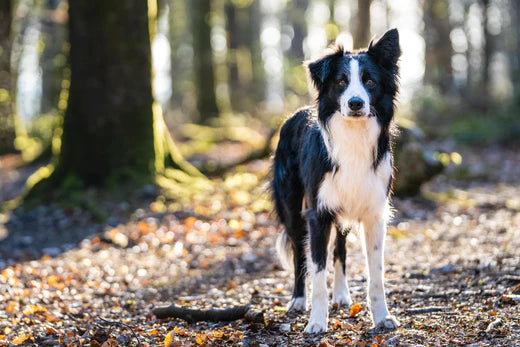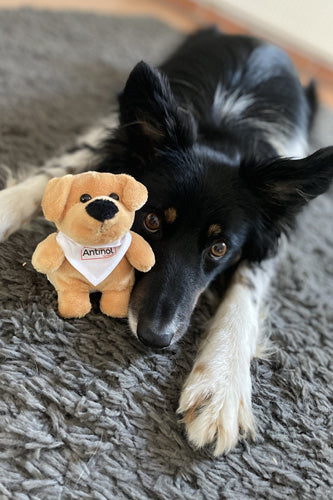Winter is coming! The temperatures are beginning to drop, and the gloves and scarves are coming out of the cupboards. But it’s not just us that feels the cold — our dogs do too.
So, this winter, we’re shining a light on joint health and how cold weather can impact our canine companions.

What effect can wintery weather have on my dog’s mobility?
Many pet owners find they lose a little of their get up and go in the winter months. The combination of dark mornings and even darker afternoons, the chill and wetness in the air makes us reluctant to leave the warmth and cosiness of our homes. This makes keeping up on walks a bit more challenging.
For many, mobility isn’t a top priority when winter sets in.
Humans and dogs alike often find the cold weather and winter months challenging when it comes to joint health and mobility.
Whilst experts still haven’t gotten to the bottom of pinpointing exactly why the cold weather and winter months have such an impact - studies done in humans have shown there is a correlation between mobility and temperature, as well as with humidity, air pressure and wind speed.
All of which change dramatically in the UK during the winter months.
The effects of temperature and humidity changes are more difficult to study in dogs, but given the biological and physiological similarities between humans and dogs, similar results could be inferred.
This is supported by both the increase in numbers of vet visits (focused on mobility and joint health) and the increase in sales of joint supplements for dogs during the winter.
Although science hasn’t yet provided us with a solid answer as to why winter has such a negative impact on mobility, if you notice your dog slowing down a little this winter, there could be a few reasons to consider:
Air Pressure
When the temperature drops, air pressure tends to increase. This can cause an expansion in body tissues, including muscles and tendons. This expansion puts extra pressure on the joints, not seen in the winter months.
Joint viscosity
Joint temperatures fall in response to lower air temperatures, more dramatically than other areas of the body, and this results in slower joint movements. It is thought that the lower temperatures lead to an increase in the thickness of the joint fluid which acts like lubricant oil between the bones. Thickened fluid increases the effort required to move the joints, and decreases the speed they can move.
Increased sensitivity
Studies have also shown that high barometric air pressure can increase sensitivity. Not only that, but the decreased blood flow to extremities (such as paws) can be uncomfortable. Imagine how your fingers feel with no gloves, your dog may be feeling similar.
Decreased activity
When it's cold, we just don't get out for our daily exercise as often, or for as long. Fewer walks, less time outside. Instead, we face rain, muddy boots and pawprints all over the house—and with shorter daylight hours, it's no surprise that our dogs get less exercise. Even in winter, though, it’s important to keep your dog moving as it supports their long-term joint health and mobility.
Mood and stress
Humans often feel more stressed out, or experience low mood in the winter months, which impact our overall wellness. The same goes for our furry friends. Winter can be a more stressful time for your dog. They’re getting out less, socialising less, and seeing less sun. They’ll pick up on your mood too, so if you struggle in the winter months, your dog might also be feeling it.
Cosy up
Although we can’t say for certain why winter may impact our pet’s mobility (or our own), we now know some of the potential reasons and can perhaps adjust our lifestyle accordingly. Keeping active, reducing stress and making sure our pooches have a warm cosy spot to snuggle and warm up are just some of the ways we can support them this winter.
It’s not just mobility! Winter can take it’s toll on your dog’s skin too. Learn how to support healthy skin and a shiny coat this winter, here.









